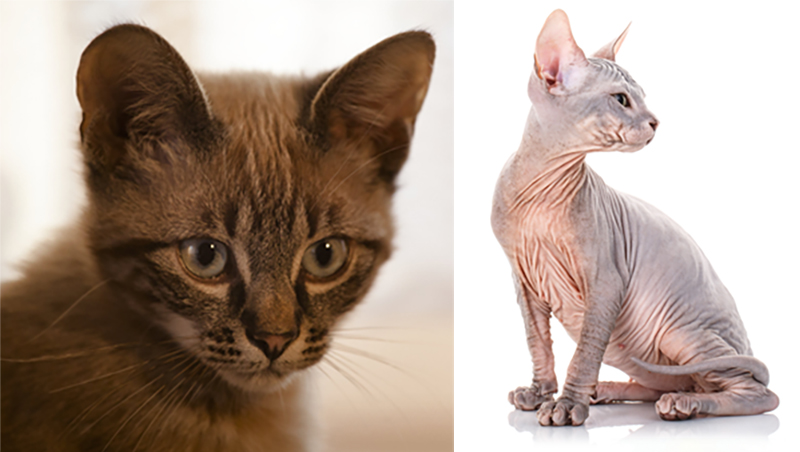Cat Hair and Skin

Albeit the sense of touch in a cat is possibly the least important sense, it is still important to consider this for a number of reasons. Both the skin and the hair have a role to play.
Firstly, the hair or fur serves as insulation against heat and cold. It also protects the cat against insect bites, stings, thorns, and other dangers and annoyances. The cat raises its hair, particularly the hair along its neck and spine, as a protective device when it is frightened or threatened. By doing so, the cat assumes a wary and defiant position. Back arched, tail hairs bristling, muscles tensed, the cat appears larger and more ferocious to its attacker.
Cats shed their hair according to climatic conditions and their state of health. Hair is naturally shed all year round, especially in the spring and autumn. However, excessive shedding is a warning signal of possible disease, poor diet, parasites, or overheating. Therefore, it is important to pay attention to the condition of your cat’s hair.
The cat’s skin is made up of 2 layers – an outer layer, the epidermis, and an inner layer, the dermis. The epidermis consists of four sub-layers, with the innermost providing for the regeneration of skin cells.

Skin protects the body from the external environment. It protects against injuries and prevents excess loss of water, electrolytes, and large molecules. Skin is the first layer of defence in the immune system. It physically blocks bacteria, viruses, fungus, and other disease causing organisms.
Although the cat’s skin is waterproof to some degree, it is not impermeable. This means that certain oils and medicines can be absorbed through the skin. This needs to be considered when you use any insecticides or medications on a cat’s skin. A toxic substance may prove fatal if absorbed through the skin.
The skin has many glands. Sweat glands are located only on the foot pads. Sweating is only a small portion of thermoregulation ie. keeping the body at a correct operating temperature. The cat predominantly cools itself by panting. Cats also have glands in their skin that are connected with the hair follicles, known as sebaceous glands. They secrete an oily substance known as sebum that solidifies when exposed to the air. This coats the hairs, thereby protecting the fur and making it glossy. In a healthy state, the cat’s skin is always elastic and pliable, with the ability to regenerate at a rapid pace.
Taking the above into account, it is important to regularly check the condition of your cat’s skin and fur. Always consider carefully before putting any oils, creams or medication on the cat. Diet will also play a large part in the health of the skin and fur. A natural, high protein, raw diet is high in moisture, preventing dehydration, allergies and issues such as dry, flaky or itchy skin.